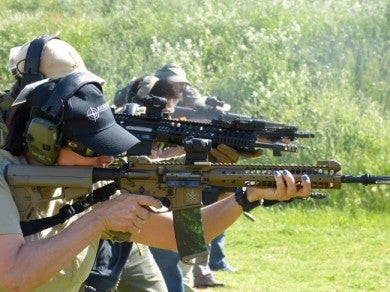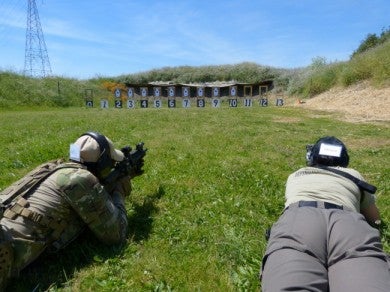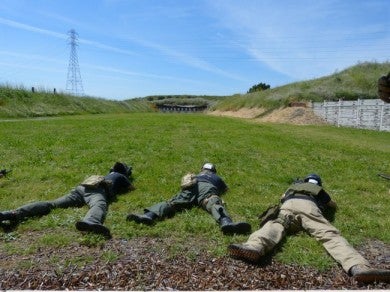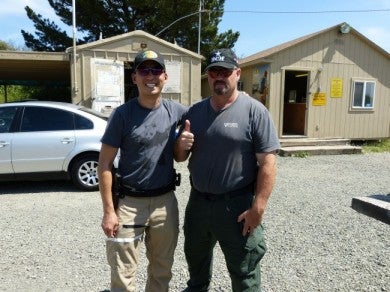One thing that is great about the firearms industry is that you can get access to some of the best, top-notch instructors in the world. Many of them travel all across the world to teach students the basics, and all the way up to advanced marksmanship skills.
Larry Vickers has been around the block a number of times and I recently had the opportunity to take his “Handgun/Carbine 1” class targeted toward folks who want to go to the next level. It is not a beginner’s course.
As with many firearm instructors, Larry has quite the personality. While world champion and instructor Robert Vogel is a mellow, even-keeled personality, Larry Vickers is a bit more brash and excitable. You will be entertained by the insightful and colorful conversations that take place during his course, and that alone is close to the price of admission ($550 for this two-day course).
For the two-day course, students were instructed to bring their a semi-auto rifle and pistol, 500 rounds of ammo for each, multiple magazines, CQB rifle optic, and a flashlight.
The course started off with an interesting discussion around the NRA’s four safety rules and how they are really fixed in a range context. When you’re out in the real world, bad guys aren’t going to be “downrange” in front of a 180 degree safety line. You should train to scan all around you, 360 degrees.
We spent a considerable amount of time zeroing rifles which was a valuable exercise for many students whose scopes were not zeroed. Starting at the 25 yard line, students fired 3-5 shot groups and adjusted their sights accordingly.
Heads up that Larry is a huge Aimpoint fan, and you may get berated for having something different. But just because Aimpoint works for Larry doesn’t mean it will work for you. That said, Aimpoint makes some very good CQB optics. In the end, you gotta try different scopes and make your own decision.
The rest of the day was practicing with the rifle in kneeling, standing, and prone positions at varying distances. The group of 18 students went in two volleys in each position, and Larry provided feedback to shooters the entire way.
Day 2 was focused on pistol work. Larry discussed how self-defense pistols should have a trigger weight between 4-6 pounds which falls within the general convention I hear elsewhere. Lighter trigger weight can lead to accidental discharges. Larry ran the class through a great drill where you place a penny or dime on the front sight of the pistol. The student then dry fires their pistol once and the goal is to keep the coin on the front sight. Students paired up and practiced this drill multiple times.

A student intently focuses on trigger control, dry firing while balancing a penny on his front sight.
Larry then added an extra element of stress and introduced a timed buzzer. We started our dry fire squeeze on the first beep, and had to complete the squeeze before the second beep. It was a very effective drill balancing speed and stability.
We then moved into a drill where we shot with our strong hand, weak hand, and then both hands at 5, 10, and 20 yards. The goal was to put all shots within the black center mass zone of the target.
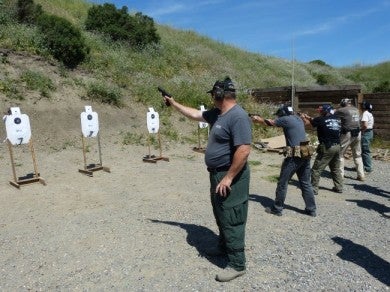
While students shot two handed, Larry shot one handed and landed all his shots on paper. Like a pro.
Larry went through a number of other trigger control drills and a number of other interesting topics and discussions. Since I don’t want to give everything away for free, you’ll have to attend one of Larry’s classes to learn from a seasoned professional.
 Your Privacy Choices
Your Privacy Choices


